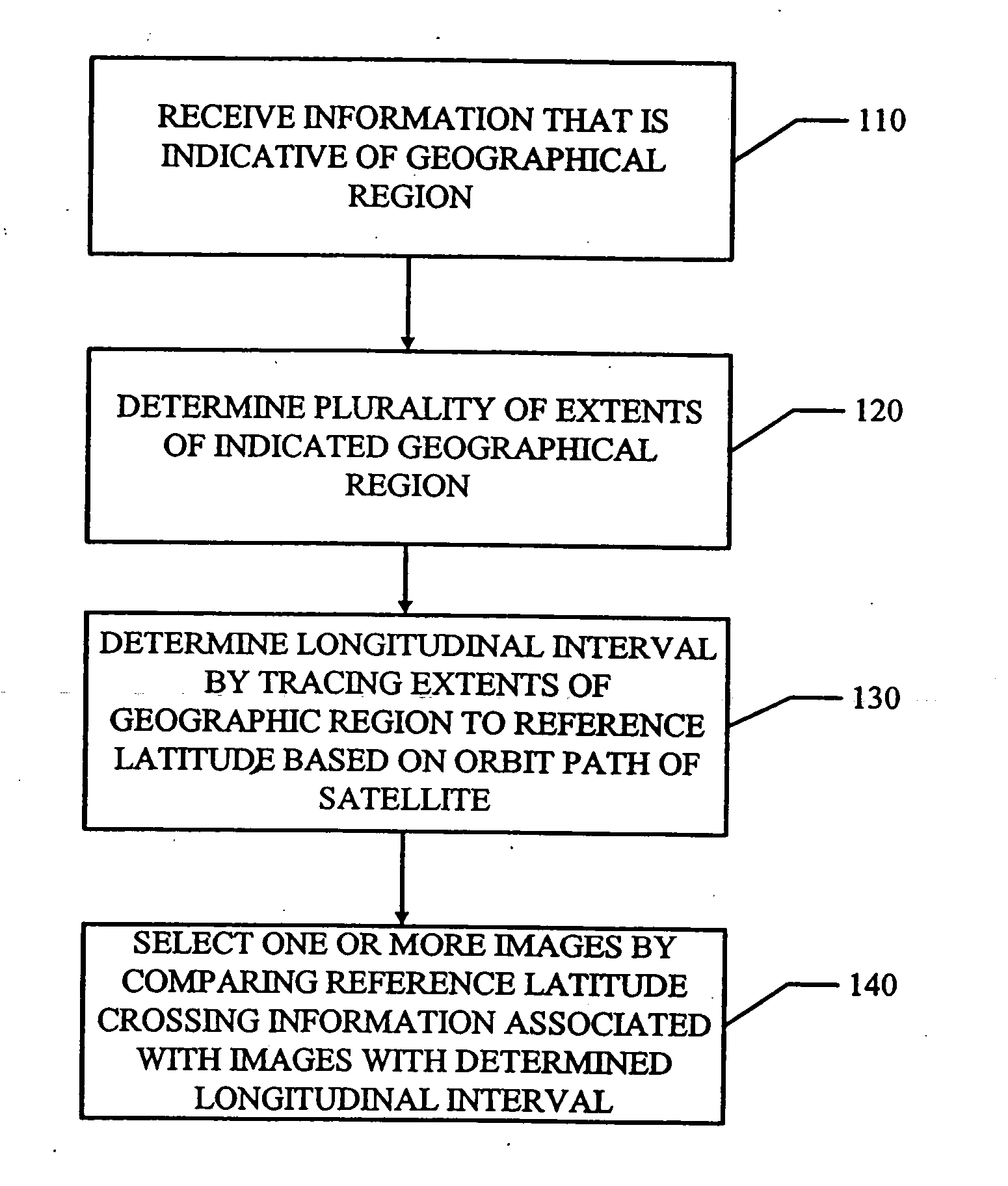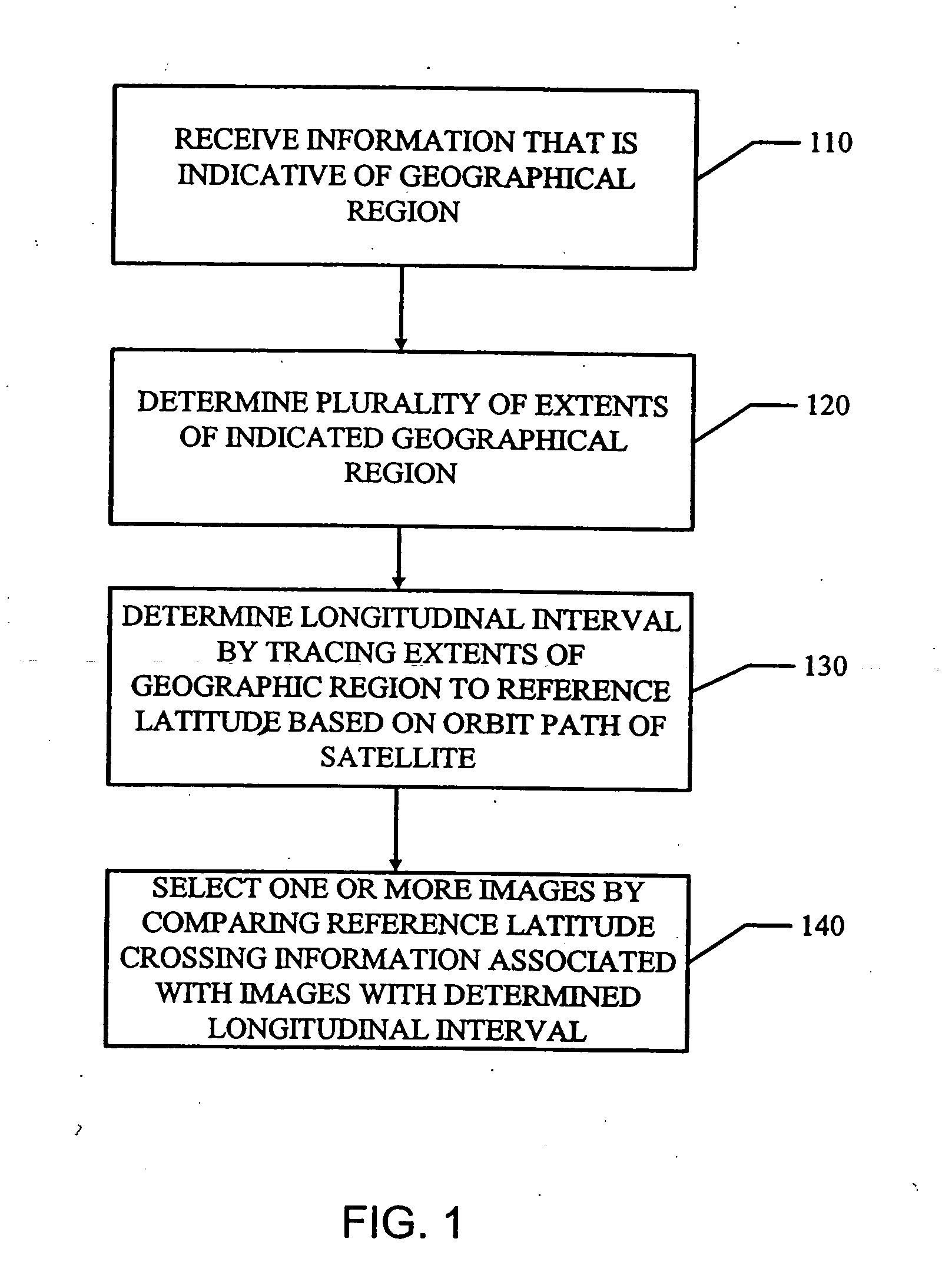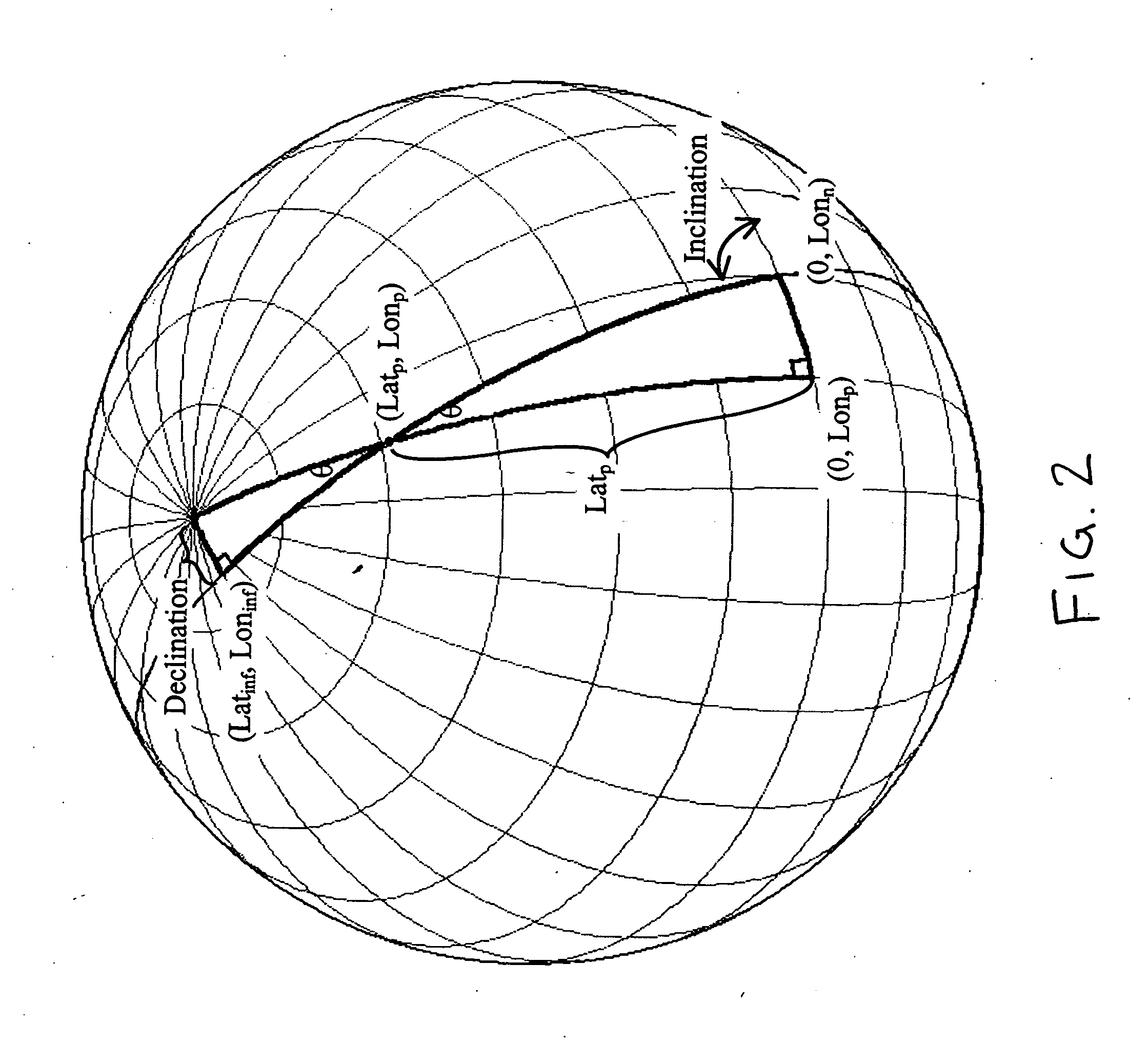Backtrack orbit search algorithm
a search algorithm and orbital data technology, applied in the field of backtrack orbit search algorithm, can solve the problems of inability to define the location of every point, high implementation cost, and the most difficult type of data to search, and achieve the effect of reducing the level of search accuracy and reducing the inventory search
- Summary
- Abstract
- Description
- Claims
- Application Information
AI Technical Summary
Benefits of technology
Problems solved by technology
Method used
Image
Examples
working example
DETAILED WORKING EXAMPLE
The Backtrack Orbit Search Algorithm:
Worked Example: Pittsburgh
[0123] The picture below is a relatively ordinary orbit for a polar orbiter. The ascending equatorial crossing is at 77.75E. The satellite has an inclination of 98.78 degrees (declination of 8.78 degrees) and a period of 101 minutes. The swath width is 1400 km.
[0124] We want to find all the orbits for which this sensor sees Pittsburgh on the ascending pass. Given the location of Pittsburgh (40.50, −80.22) the algorithm looks at what the swath would look like if the ground track of the satellite went right through Pittsburgh on the ascending pass.
1) Find the Orbit with Nadir Crossing the Given Point.
sin(θ)=sin(90−Latinf) / sin(90−Latp)
sin(θ)=sin(8.78) / sin(49.5)0.15264 / 0.76041=0.2007
θ=11.5779
Lonn=a sin(sin(θ)*sin(Latp) / Sin(Latinf))+Lonp
Lonn=a sin(0.2007*sin(40.5) / sin(81.22))−80.22
Lonn=a sin(0.2007*0.64945 / 0.98828)−80.22
Lonn=a sin(0.13189)−80.22
Lonn=7.57883−80.22=−72.64117
[0125] Then co...
PUM
 Login to View More
Login to View More Abstract
Description
Claims
Application Information
 Login to View More
Login to View More - R&D
- Intellectual Property
- Life Sciences
- Materials
- Tech Scout
- Unparalleled Data Quality
- Higher Quality Content
- 60% Fewer Hallucinations
Browse by: Latest US Patents, China's latest patents, Technical Efficacy Thesaurus, Application Domain, Technology Topic, Popular Technical Reports.
© 2025 PatSnap. All rights reserved.Legal|Privacy policy|Modern Slavery Act Transparency Statement|Sitemap|About US| Contact US: help@patsnap.com



